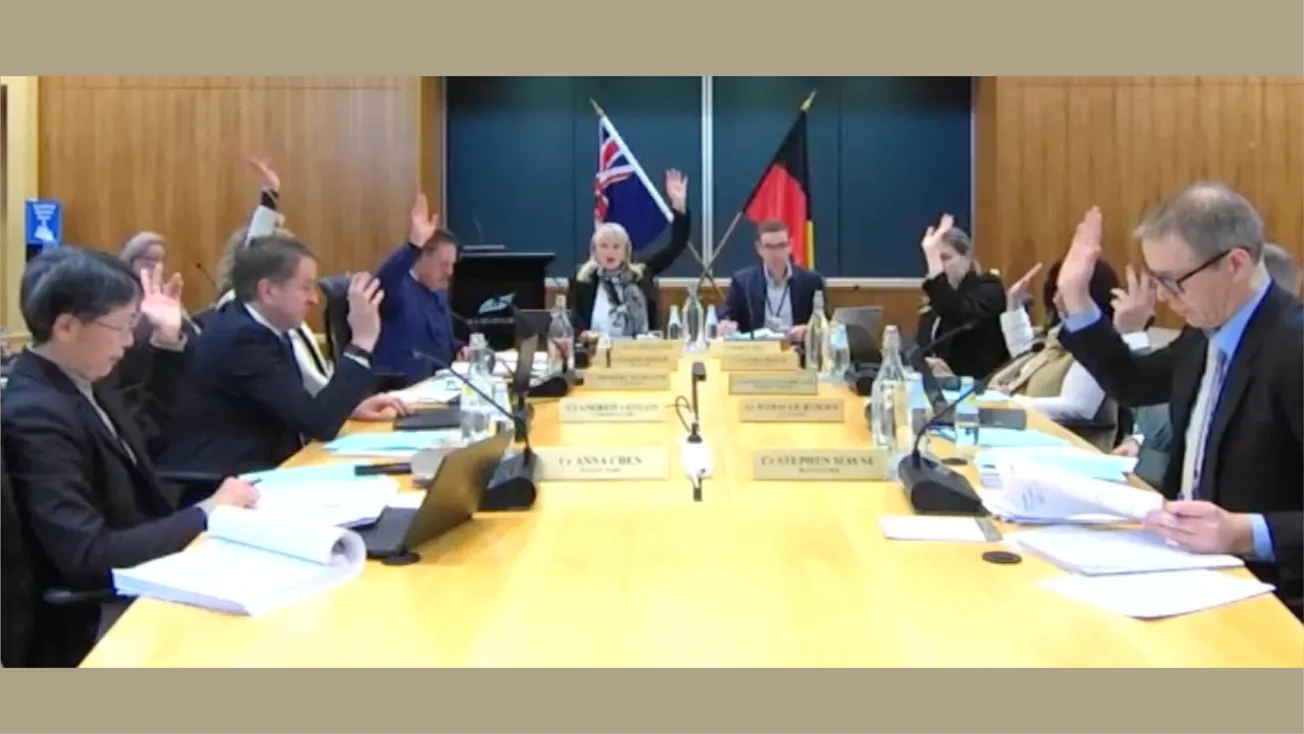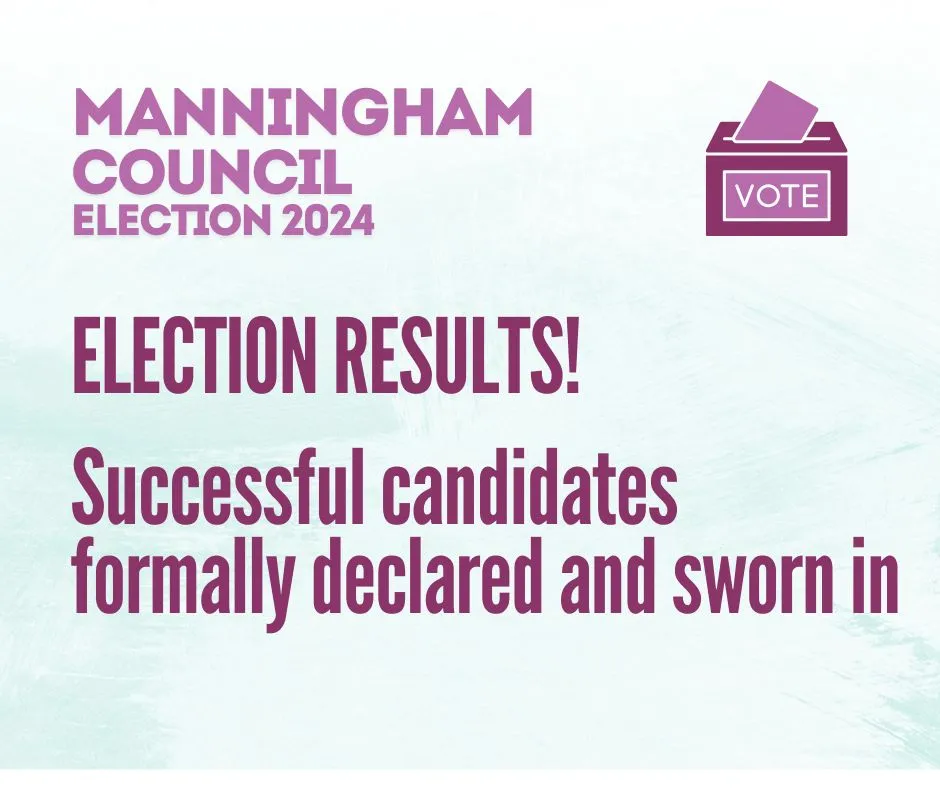Table of Contents
By Alexander Owens
The end of the year sees Manningham’s councillors tackle a backlog of decisions and reports.
This year’s two-and-a-half-hour marathon December meeting was no different, and this last quarter featured cat confinement, local wastewater treatment, divided votes, and an unusual focus on cricket.
Manningham’s councillors hold a special annual meeting each November to elect a new mayor and deputy mayor. Throughout this council’s term, each election has been uncontested, with only one councillor nominating for the positions. Cr Carli Lange was elected unopposed to serve as Mayor until October 2024, with Cr Laura Mayne also elected unopposed as Deputy Mayor.
A pilot 24-hour cat confinement initiative was incorporated into Manningham’s Domestic Animal Management Plan in May 2023, sparking some controversy from concerned cat-owning residents. This is a decision following similar plans enacted by councils across Australia in light of evidence that roaming cats kill up to half a billion animals a year, the majority of those being native species. The federal government is currently examining the threat of cats in its own legislation. Council resolved 8-1 (Cr Gough against) to begin its two-year phased pilot in December 2023. Cat confinement will start on 1 April 2024, with councillors committed to education outreach before this date. No fines will be given until 1 January 2025 for cats caught outside their registered property, with a nine-month amnesty period designed to give residents further information. Cr Andrew Conlon has transitioned his cats to be confined to his property since May and is now enthusiastic towards confinement, saying this is “good for people, good for the environment, and great for cats” – and this position is supported by existing evidence.
The controversy surrounding the proposed local wastewater recycling facility is an order of magnitude greater than any surrounding the cat curfew. Sixteen years after then-Mayor Geoff Gough signed a memorandum with Yarra Valley Water to provide a local processing facility, the construction of one has now been approved 8-1 (Cr Chen against) under parkland at the rear of 2-18 Tram Road. Councillors spoke of the difficulty in making this decision, acknowledging both the impact of construction and the eventual undesirable situation of living next to a waste processing facility. However, they leaned on net benefit and compromise to explain their support. Over the sixteen years, the project has evolved from a large above-ground facility to now being a below-ground facility with a small ground level footprint and retention of parkland. Councillors also stressed that by approving the permit, they had attached fourteen pages of conditions protecting residents through construction and ongoing operation. A similar facility is already operational in parkland around the MCG, and odours are imperceptible per EPA guidelines. Approving the facility is another difficult decision that considers both the environment and the broader amenity of residents. During drought, this recycled water will be a valuable resource for all houses built with a third ‘purple’ pipe for its use. The local nature of processing means water does not need to be pumped great distances.
With inflation, material costs and labour costs still running high, budgets for some capital works planned pre-2020 have required significant upward adjustments. The construction of a new visitor centre and upgrade of the existing Schramm’s Cottage is one such example, where a project cost of $2.2m in 2020 will now require at least $777,000 to achieve a scaled-back outcome. Schramm’s Cottage is a significant heritage site in Manningham. Built in 1875, it is representative of the orchards and farming in the area at the time. The Cottage serves as the home of the Doncaster Templestowe Historical Society, and the works would significantly benefit their volunteer-run operations, be fit for displaying and maintaining their collection, and be more accommodating for school visits. Several community members spoke in favour of the project being fully funded during December’s question time, and councillors chose to fully fund the project, voting to provide an additional $1 million. This decision was against the officers’ recommendations to discontinue the project in the face of cost increases and instead identify ways of improving the overall precinct. Notably, neither the Historical Society nor the Council discussed the Wurundjeri peoples or indigenous history, which spans 300 times the two centuries of history the Society works to preserve.
October saw a discussion on an Affordable Housing Policy and a stern rebuke of the State Government’s Housing Statement (a preliminary strategy for tackling the housing crisis). The Affordable Housing Policy was unanimously endorsed with only brief talking points from the two youngest councillors, Crs Laura Mayne and Tomas Lightbody. They explained how the Policy outlined Manningham’s position to advocate for allocations of subsidised rental units in developments of over 30 units and lamented the lack of State Government-legislated mandates for providing social housing in new developments. The Affordable Housing Policy is timely as there is a significant demand for affordable housing in Manningham, and it is worth noting that provision of social housing in Manningham is far lower than in Greater Melbourne.
On a subsequent motion, all nine councillors spoke in favour of writing to the State Government expressing disapproval in a newly published Housing Statement, a preliminary set of strategies to tackle the housing crisis. The Statement is available to read online and features pictures of Manningham’s own Tullamore Estate as a model of housing development. Councillors expressed dismay at provisions that seek to centralise further planning powers with State ministers and reduce VCAT rights for resident appeals against State Government decisions. Councillors spent nearly half an hour criticising the State Government, with Cr Andrew Conlon specifically blaming high rates of immigration and Cr Geoff Gough suggesting decisions were being held up at the State level with municipal governments getting the blame. The councillors saw these changes as a further attack on the planning powers it holds and prides itself on wielding.
However, in planning decisions, Manningham is an outlier among slower peer councils, processing 92% of applications within the 60-day State-mandated window. Of the 2.7% of decisions appealed to VCAT, only one in five went in the developers’ favour. Of 806 decisions made, 800 were in line with the State Government’s position. Manningham is, by the data, one of the more efficient planning bodies in Victoria, and the changes in this small part of this statement are not an attack on Manningham; instead, they are a planned tool to improve efficiency across councils not meeting their approvals timelines. Most of the Statement discusses affordable housing and precinct strategies, the very issues the Councillors were lamenting about a lack of leadership from the State Government just moments earlier. Rather than identifying ways to work productively with all levels of government, councillors instead chose to express their disapproval and advocate for residents to follow their position.
Cr Stephen Mayne has been a vocal advocate of cricket through his term on Manningham Council, and over the last three months the councillor has moved several cricket-specific motions and amendments. Most notably, as a finalised pricing policy for the use of sports grounds was presented to councillors, he successfully attached an amendment to specifically limit the increases to cricket field usage pricing by 10% per annum. Though this amendment was in reaction to the cricket fields experiencing the greatest price increases of sports mentioned, council officers had designed the pricing to recuperate 35% of the costs of maintaining and running these facilities when booked by a Manningham club, representing a significant investment by Manningham in all sports. 35% of sports clubs will see their facility fees decrease due to the changes, however after this amendment no other type of sport has the rate increase protection that cricket has. Additional cricket motions include a focus in councillor reports on cricket activity in the municipality, and an additional motion requesting officers prepare a feasibility report on providing indoor cricket facilities, adding a pavilion on land Council currently leases, and adding white fencing to “really lift the look and heritage feel” of the oval at Schramm’s Reserve.
Annual and quarterly reports were tabled as mandated by the Local Government Act, and these documents continue to become more accessible with colour coding and diagrams to break down spending and activity. These are accessible through Manningham’s website. Public question time also remains an important forum for residents to engage with councillors, and the youngest resident who appeared during question time brought with them a novel proposal: a doughnut day to foster community unity, held at Ruffey Lake Park. The proposal appeared to be warmly received when CEO Andrew Day responded to the young resident, and I personally hope to hear an update on this in 2024.









